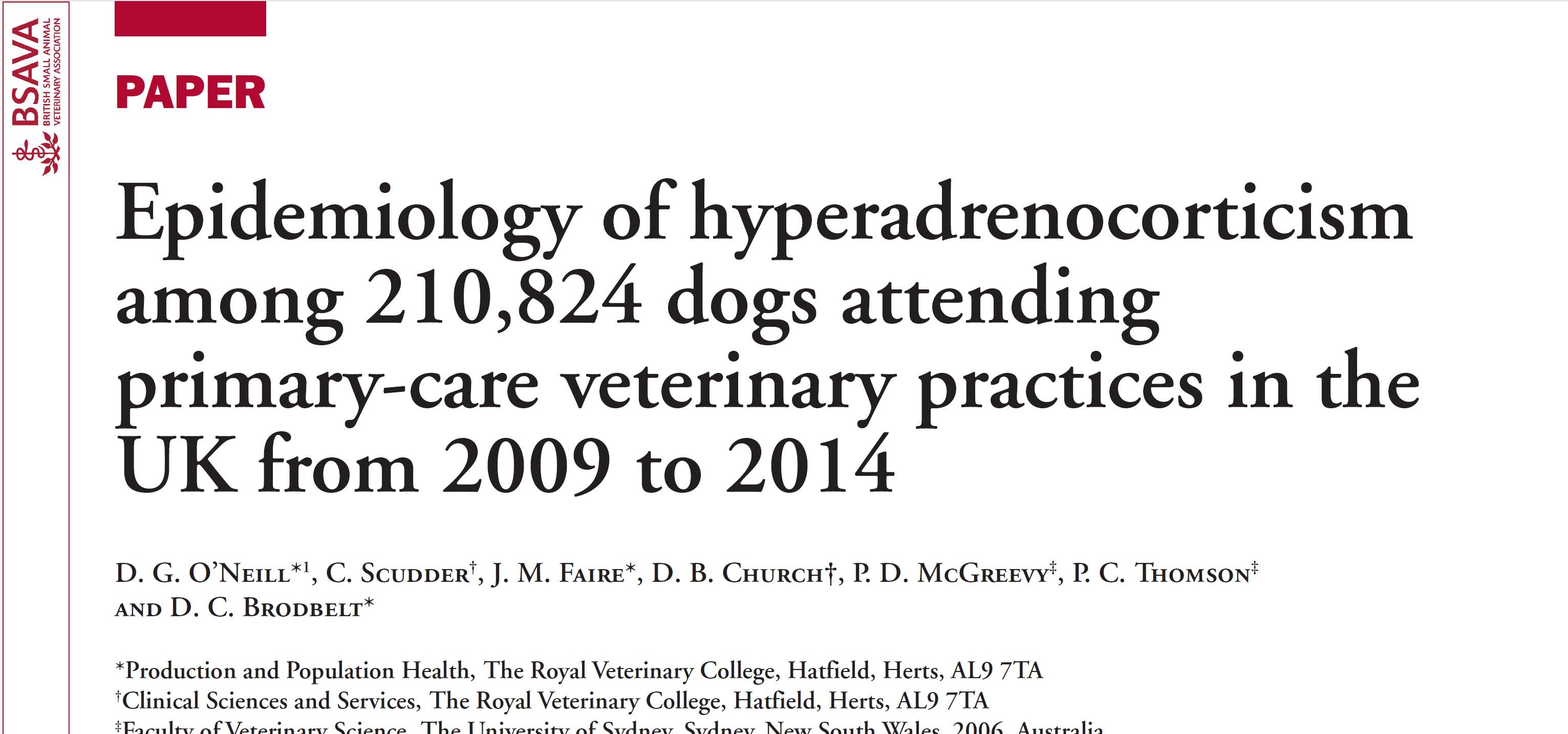Hyperadrenocorticism results from chronic overproduction of cortisol and the welfare of affected dogs can be severely impacted, often showing polyuria, polydipsia,polyphagia, muscle atrophy and dermatological changes. This study within the VetCompass Programme aimed to estimate prevalence and risk factors for diagnosis with hyperadrenocorticism in dogs attending primary-care veterinary practices in the UK.
The estimated prevalence for hyperadrenocorticism diagnosis in dogs was 0·28% (95% confidence interval: 0·25 to 0·31). Associated risk factors included breed, breed-relative bodyweight, age and insurance status. The bichon frise had 6·5 times the odds of hyperadrenocorticism compared with crossbreds.
The full publication of 'Epidemiology of hyperadrenocorticism among 210,824 dogs attending primary-care veterinary practices in the UK from 2009 to 2014' is available on the JSAP site.
OBJECTIVES To estimate prevalence and risk factors for diagnosis with hyperadrenocorticism in dogs attending primary-care veterinary practices in the UK from 2009 to 2014. METHODS Cases were identified by searching the de-identified electronic patient records from UK primary-care veterinary practices participating in the VetCompass Programme. RESULTS The estimated prevalence for hyperadrenocorticism diagnosis in dogs was 0·28% (95% confidence interval: 0·25 to 0·31). Multivariable logistic regression analysis revealed four associated risk factors: breed, breed-relative bodyweight, age and insurance status. The bichon frise had 6·5 times the odds (95% CI: 3·5 to 12·1, P<0·001) of hyperadrenocorticism compared with crossbreds. Dogs weighing more than or equal to their breed mean had 1·7 times the odds (95% CI: 1·3 to 2·3, P<0·001) of hyperadrenocorticism compared with dogs weighing less than the breed mean. Dogs aged 12·0 years and above showed 5·7 times the odds (95% CI: 3·7 to 8·7, P<0·001) of hyperadrenocorticism compared with dogs aged 6·0 to 8·9 years. Insured dogs had 4·0 times the odds (95% CI: 2·8 to 5·6, P<0·001) of hyperadrenocorticism compared with non-insured dogs. CLINICAL SIGNIFICANCE This is the first epidemiological report of a non-referral hospital population of dogs diagnosed with hyperadrenocorticism in the UK and describes important breed, age and bodyweight associations with this disorder which may improve diagnosis and enhance understanding of the underlying pathophysiology.
 Donate
Donate
Recommended Comments
There are no comments to display.
Join the conversation
You can post now and register later. If you have an account, sign in now to post with your account.
Note: Your post will require moderator approval before it will be visible.